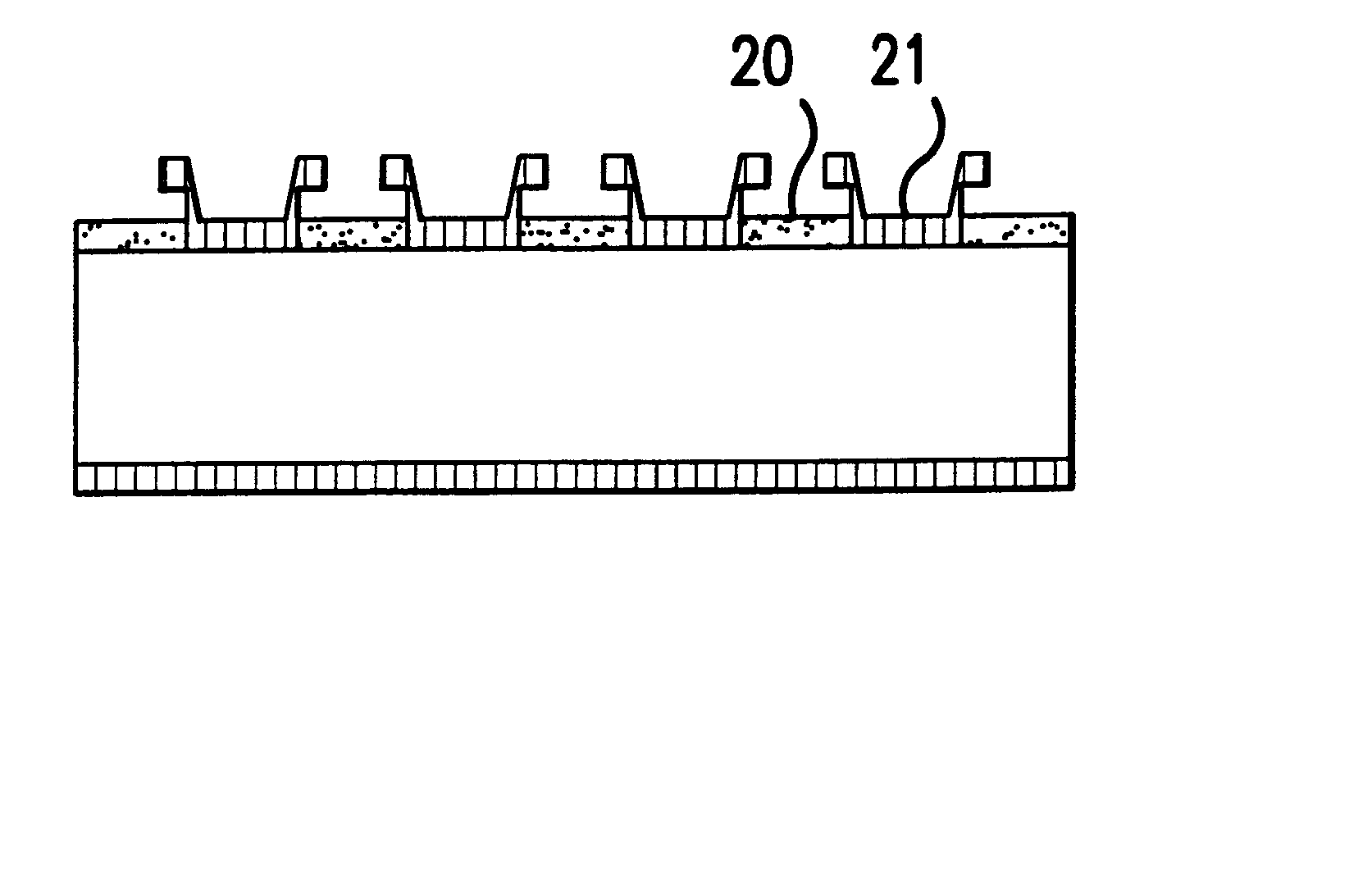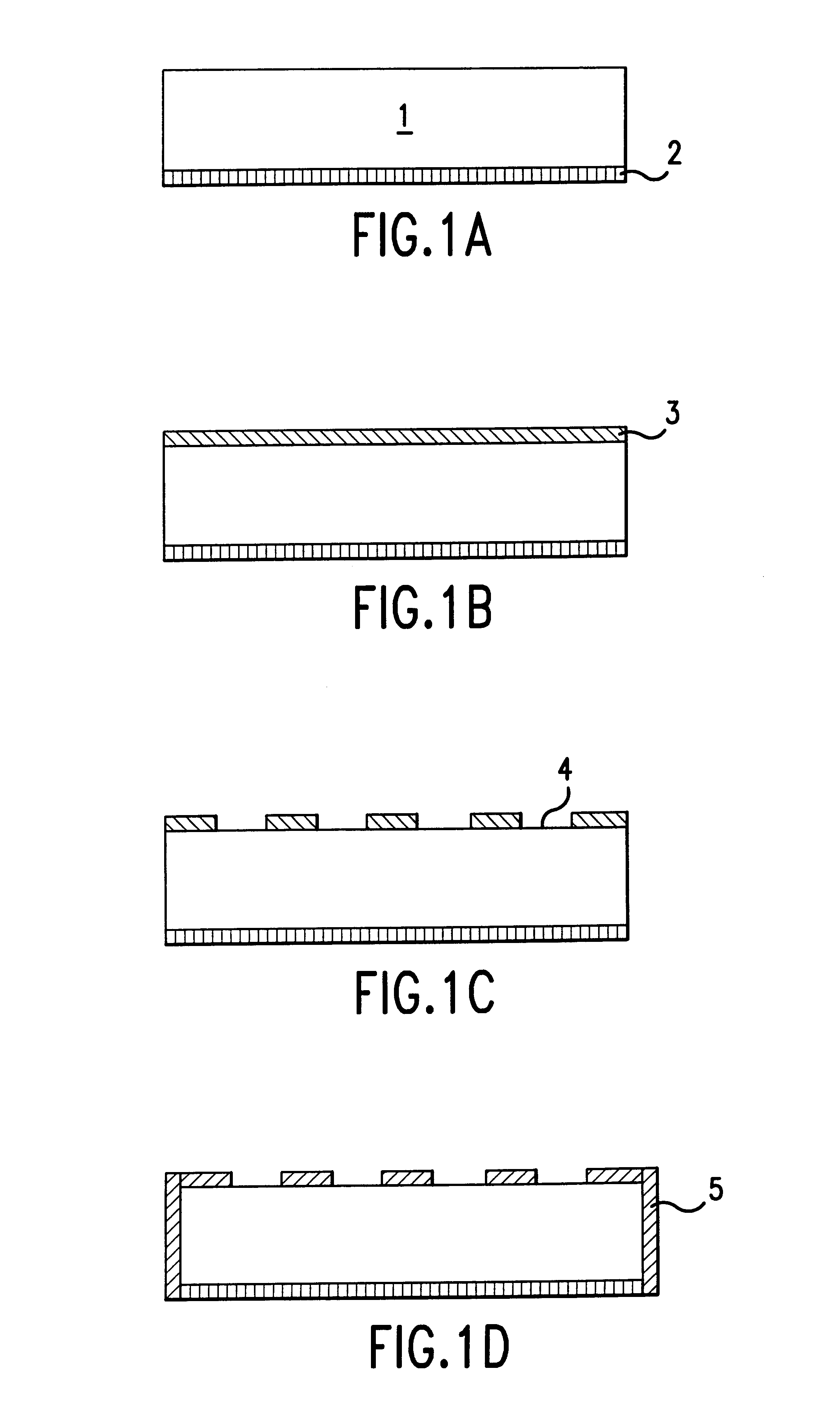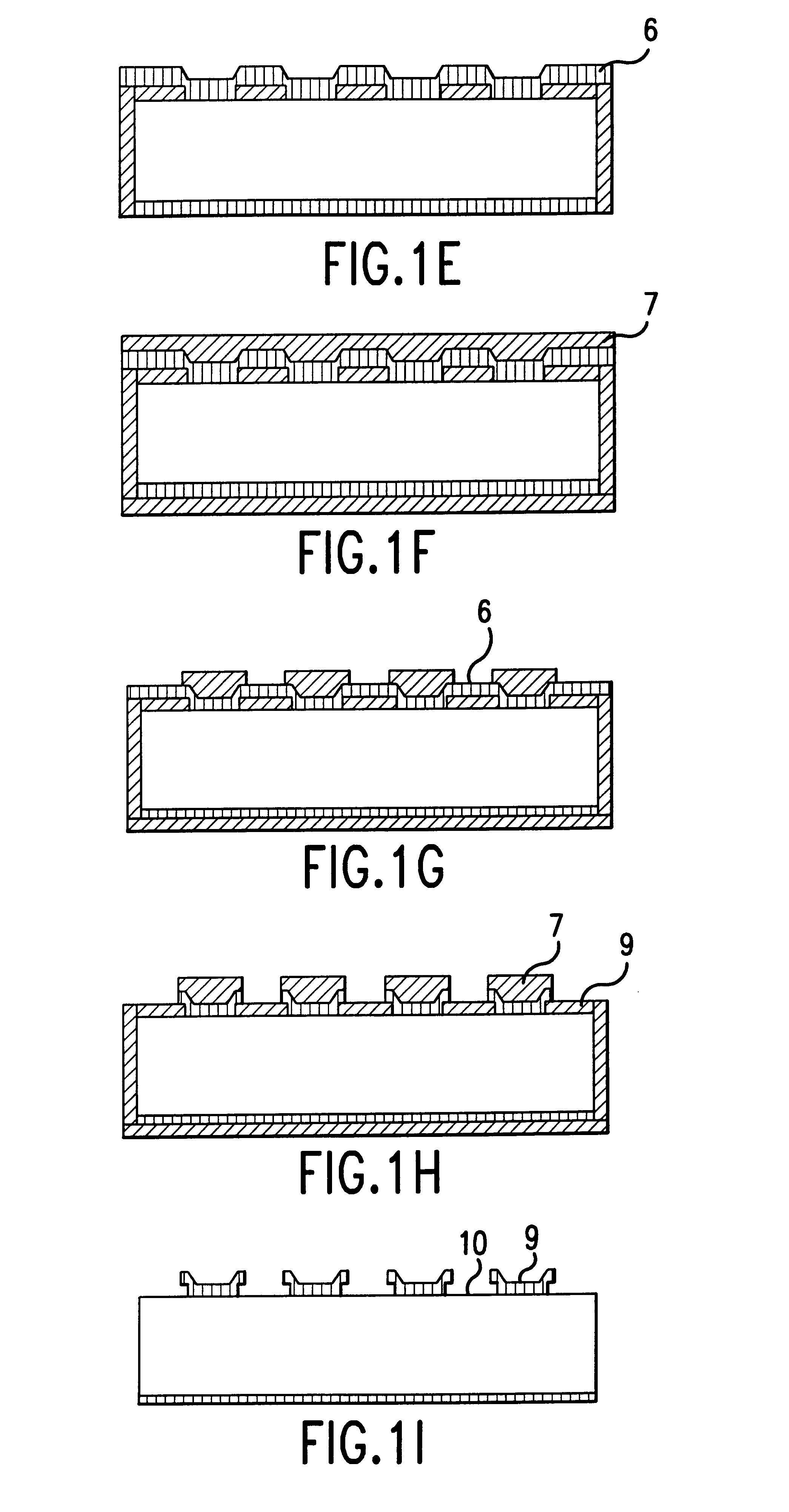Forming contacts on semiconductor substrates, radiation detectors and imaging devices
a technology of semiconductor substrates and contacts, applied in the direction of x/gamma/cosmic radiation measurement, radiation controlled devices, instruments, etc., can solve the problems of poor electrical separation of individual contacts, which results from the conventional method of forming such contacts, and achieves stable performance, reduce inter-contact resistivity, and increase surface leakage current
- Summary
- Abstract
- Description
- Claims
- Application Information
AI Technical Summary
Benefits of technology
Problems solved by technology
Method used
Image
Examples
Embodiment Construction
FIGS. 1A-1I illustrate in progressive fashion a method for forming metal contacts on a semiconductor substrate at positions for defining radiation detector cells, according to an embodiment of the present invention. The series of drawings presents schematic cross-sectional views from the side of a detector at various stages in the formation of metal contacts on a semiconductor substrate. In this embodiment, the semiconductor substrate is made of cadmium zinc telluride (CdZnTe), although other semiconductor materials, such as cadmium telluride (CdTe), may also be used. Likewise, the metal used for the metallization layer and the metal contacts is gold, although other metals, alloys or conductive materials, including platinum and indium, may also be used.
In the following description, various method steps are described with reference to a corresponding one of the series of FIGS. 1A-1I. For example, "Step A" corresponds to FIG. 1A, "Step B" corresponds to FIG. 1B, and so on.
Step A
A dete...
PUM
 Login to View More
Login to View More Abstract
Description
Claims
Application Information
 Login to View More
Login to View More - R&D
- Intellectual Property
- Life Sciences
- Materials
- Tech Scout
- Unparalleled Data Quality
- Higher Quality Content
- 60% Fewer Hallucinations
Browse by: Latest US Patents, China's latest patents, Technical Efficacy Thesaurus, Application Domain, Technology Topic, Popular Technical Reports.
© 2025 PatSnap. All rights reserved.Legal|Privacy policy|Modern Slavery Act Transparency Statement|Sitemap|About US| Contact US: help@patsnap.com



